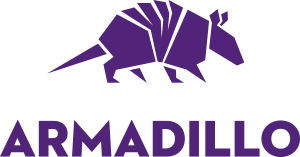
Norway 75 - Commando Spirit is an expedition that will traverse the length of Norwegian by sea and land to celebrate and retell the Commando raids from WWII. We are proud to support the team as they embark on this expedition and they will be wearing Armadillo Merino® next-to-skin to protect them from the elements.
Below is from an interview with Tim, the team leader.
Norway 75 Commando Spirit – what is it?
In June 2018, a team of 8, which include serving and former Royal Marines, will cross the entire length of the Norwegian coast by sea (kayak) and land (bike), retelling heroic stories of combined Commando raids from WW2 and culminating in the commemoration of the 75th Anniversary of Operation Gunnerside – the successful sabotage of the Nazi nuclear program. In raising the profile of the challenge, the team aim to raise awareness for the Royal Marines Charity and their efforts to support good mental health.
Who is in the team?

Tim – Royal Marines and Team Leader
James – Former Royal Marine
Lucy – Royal Marines Band Service
Ric – Royal Marines
Rodge – Royal Marines Mountain Leader
Pip – Adventurer and journalist
Rich – Royal Marines
John – Royal Marines
Where are you going?
In our bid to retell numerous stories of combined Commando raids in unique and captivating ways, we will begin our 2000 mile journey on the Norwegian-Russian border in the high North. Cycling an average of 160km a day and sea kayaking up to 45km a day, our aim is to continually leapfrog each other with the mobile support team and set up the Land Rover base camp wherever suits! Each raid is fairly evenly spread out and will take on the following order:
What is a Commando and what is the link?
Whilst the Corps of Royal Marines dates back to 1664, the term Commando as we know it, drew itself from a request from Winston Churchill shortly after the evacuation of Dunkirk. The request was to form a raiding force that could carry out acts of sabotage against German occupied Europe - "they must be prepared with specially trained troops of the hunter class who can develop a reign of terror down the enemy coast”.
Whilst the Commando force of WW2 was trained in Achnacarry, Scotland, the modern day Commando is trained in Lympstone, Devon – this is the location where recruits earned their coveted Green Beret and Commando Flash. This will only be awarded once ranks pass the Commando course which culminates in the Commando tests; the 9 mile speed march, the Endurance Course, the Tarzan Assault and the 30 miler.
What were the Telemark raids?
The Telemark raids, formally known as Operation Grouse and Operation Gunnerside, were the Allied efforts to prevent the Nazis from acquiring heavy water (deuterium oxide) at one of their key Norwegian installations – the Vemork Hydroelectric Plant situated to the South of the Hardanga Plateau. Success in attaining heavy water would have allowed the Nazis to produce a nuclear capability and ultimately change the fate of the war should they have been able to weaponize it.
Whilst Operation Grouse was a failed attempt in late 1942, in February 1943 Operation Gunnerside saw success in sabotaging the plant, putting the German nuclear scientists months behind, and bringing the Allied forces one step closer to winning the war.
The basis of the operation was for 6 SOE trained Norwegian Commandos to link up with 4 others who were already on the ground in Norway having remained in place following Operation Grouse. After parachuting in, linking up and bring a local spy into their presence, the combined team skied across the Hardanga Plateau in the brutal mid-winter conditions, ascended a huge ravine to the plant and conducted their sabotage mission on the heavy water plant room.
Along with the destruction of the heavy water transport boat, the SF Hydro, the entire inventory of heavy water produced during the German occupation, over 500 kg, was destroyed along with equipment critical to operation of the electrolysis chambers. Although 3,000 German soldiers were dispatched to search the area for the Commandos, all of them escaped; five of them skied 400 kilometres to Sweden, two proceeded to Oslo, and four remained in the region for further work with the resistance.

Photo: @imperialwarmuseums
Moving onto your planning, how are your training, and do you each have a training plan?
No individual team member has their own specific training plan that has been prescribed, however time on the bike and kayak getting miles in the arms and legs is seldom wasted. The difficulty we have to overcome as a group is gaining certain mandated Service competencies i.e. driving qualifications, minimum kayaking standards and medical training, and all through qualified military instructors – without this, we couldn’t actually go!
As such, there is a greater focus in this area and is achieved through concentrated training phases where the team comes together from around the UK to work these through. For example, there is a 1 week expedition paddle phase on the Isle of Wight in May which is also doubled up with key medical and communications training.
Who is the cyclist?
There are a number of us who are keen cyclists, but Rich is definitely the winner when it comes to cycling ‘pest’! He provides the team with key input towards our mechanical training, kit requirements and technique on the bike when out on team rides. An invaluable member of the team to say the least.
Who is the kayaker?
There is far less experience in the kayaking field than the cycling field, with a fairly large reliance upon Lee Waters, a former Royal Marine who is now an independent sea kayak guide. To that end, most of our physical group training has been leaning towards paddle technique, rescue drills, navigation and simply getting miles in the arms. Outside of sea kayaking, the most paddle experience actually comes from Pip who has just completed an amazing world first expedition in Guyana – https://theessequibo.org/

Has the team spent much time together?
It is very difficult to get the entire team in one place at the same time, so team meets have been quite intermittent. This is simply due to the fact that we all hold different jobs with multiple commitments in different parts of the UK. Before setting off we will have completed 3 team meet days in Portsmouth, a 3 day kayak/cycle phase, a 3 day off road training package in Devon, a 1 week kayak and communication phase on the Isle of Wight and of course, our official launch in London!
What kit are you taking?
The team will be based out of two Land Rover Discovery 5s – these will form our mobile base camp as we cross the length of the country. Travelling on the road/gravel, we will be using Giant Toughroad bikes and on the water, Neris Alu-2 folding kayaks. Communication support is coming from Inmarsat through their BGAN/E510 and Dell EMC through their rugged laptops. Victuals are generally freeze dried rations, but vegan based from LYO Foods. Outside of plenty of other key pieces of kit and equipment, our next to skin solution is of course, coming from Armadillo Merino!

What will a typical day be like kayaking and cycling?
There are days on the bike where we could cycle up to 200km, however the average will be around 150km. Conversely, distances covered on the water will be around 25 nautical miles a day dependent on headwinds and tidal flows. The headwinds will definitely play a big factor into our progress in the more Northern reaches; tidal flows will certainly play a big factor throughout!
What is the charity you are supporting?
The Royal Marines Charity and their efforts to support good mental health. This has among the widest purposes of any Service charity in that it looks after both serving and retired Royal Marines, and their dependents – this converts into some 125,000 potential beneficiaries.
It goes without saying that they seek to support wounded and injured in any way they can. But they also seek to improve the quality of life for each and every Royal Marine. And they continue this support long after our people have severed their formal links to the Corps - actively seeking to build lasting relationships with leading UK companies so that Royal Marines leaving the Corps can go on to find meaningful second careers.
Please visit our page and donate: https://www.justgiving.com/fundraising/norway75
Where can people find out more and follow the expedition?
Website: www.norway75.com
Twitter: @norway_75
Instagram: @norway75
